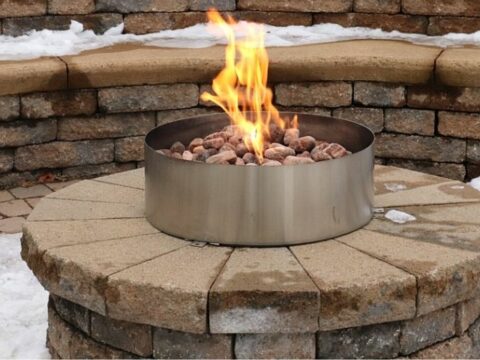Are you wondering if you should be drilling holes in your fire pit?
Fire pits are a must, whether it’s for camping outdoors or an excellent barbecue in the backyard.
And there are various options available when one is browsing to get a new fire pit. So many varieties that they may overwhelm you.
These fire pits differ from each other a lot when it comes to the features they offer.
Table of Contents
Drill Holes in your Fire Pit?
Most likely you won’t need to drill holes in your fire pit because there is a ton of fire pit options out there already that come with air vents. Drilling holes in your fire pit exposes the non-polished surface to the air causing it to rust. But you can drill holes in a traditional metal fire pit that doesn’t come with holes.
To start a fire, you need air, of course. And that airflow, when restricted, can shorten the lifespan of your fire.
If your fire pit doesn’t have enough air vents, your camping wood will waste, and your fire will not burn to its full potential.
If your fire pit doesn’t have any vents at all, it might be why your fires are weak and don’t burn enough. But you can’t just drill holes into your fire pit without proper care.
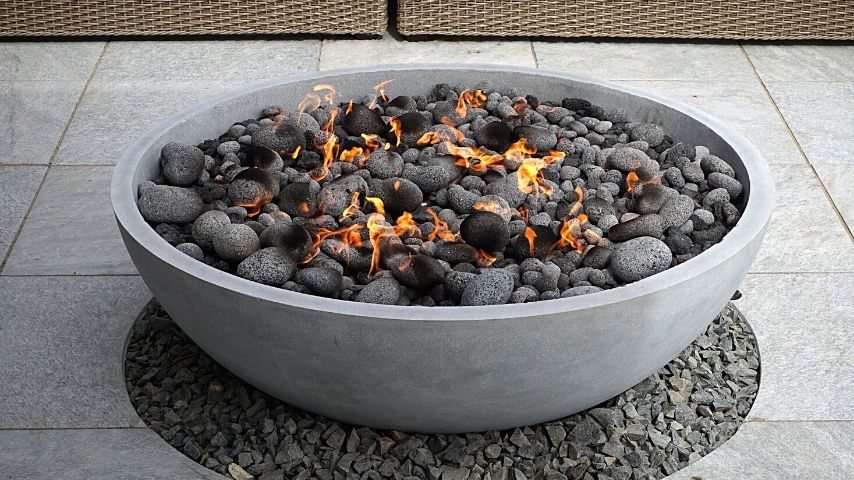
The air vents you are to drill into your firepit must be of a specific size and placed at a certain distance from each other.
If not done correctly, these holes can be hazardous.
They can give way to rust as the unpolished surface of the fire pit is exposed to the air and cause ashes, coal, and other debris to fall to the ground from the fire pit.
Types of Firepits
Before we get into the details of drilling a vent into your fire pit, let’s discuss the different fire pit options available in the market and the kind of air vent they need.
Stone Fire Pits
As the name suggests, Stone or brick fire pits are fire pits made of stone or bricks. These fire pits are fixed on the ground and are immovable.
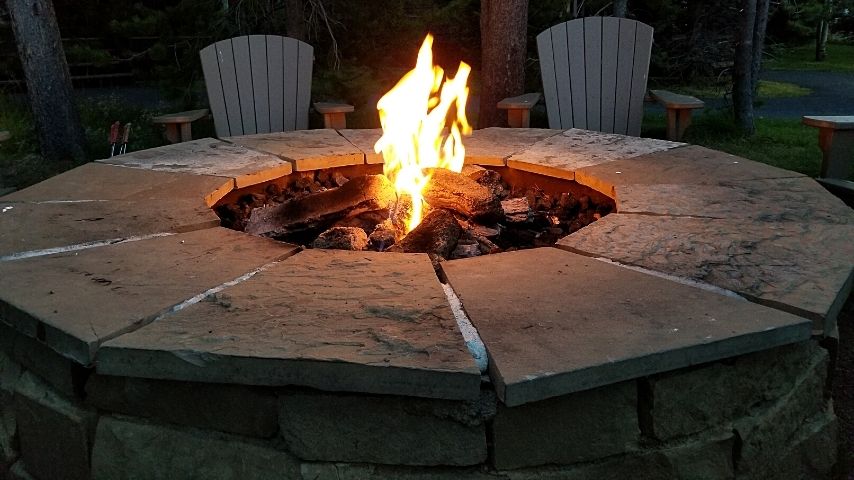
Since these fire pits have their air vents installed at the bottom of the hole, making them immovable.
If your brick fire pit doesn’t have a hole, you can slide out a brick from the bottom to allow airflow to the flames.
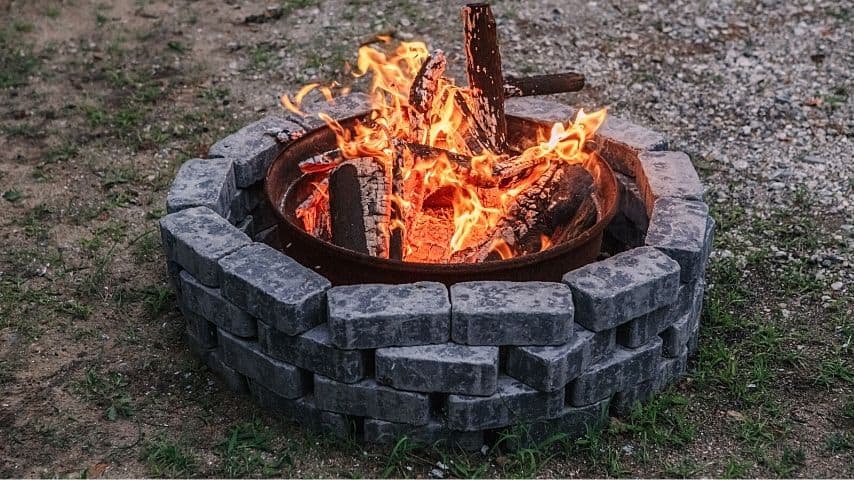
Metal Fire Pits
The most commonly used fire pits are metal fire pits, especially the iron ones. They come in multiple sizes and have various features.
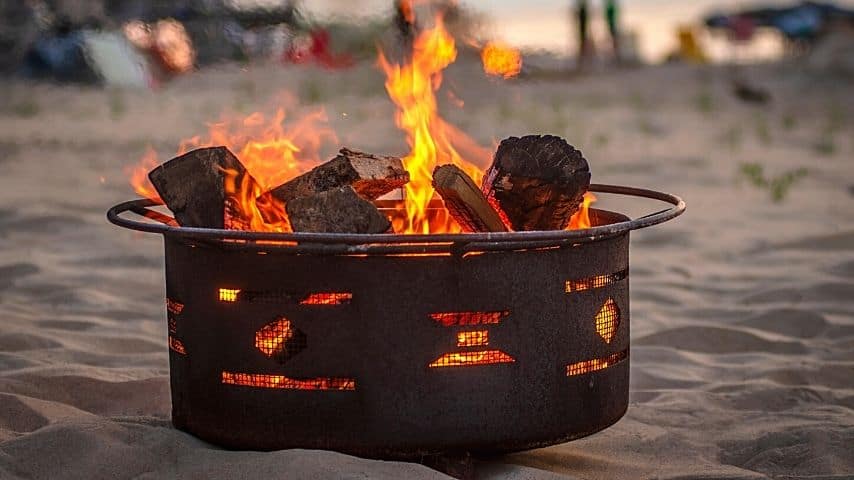
The most popular ones these days already have air vents installed in them. But the traditional ones are metal fire pits without any holes.
How to Drill Holes in a Fire Pit
Although drilling a hole in the fire pit isn’t a difficult task. You should take note of some important pointers first before getting to it.
Drill Holes in a Stone Fire Pit
Placement
In a stone or brick fire pit, you have to make sure that the placement of your air vent is as close to the ground as possible.

Size
Stone fire pits are more significant than metal fire pits so you can go bigger on the size.
Your hole should be approximately 3 inches in diameter at the bottom of your fire pit.
Additional Tip
If you have drilled your fire pit in the wrong place or if it’s too big or too small.
Getting a metal circle to block an air vent can be helpful.
Drill Holes in a Metal Fire Pit
In case you have a traditional metal fire pit, here is how you can drill holes for airflow in it.
Things to Consider
Before you start drilling the holes, first consider for what purpose you will be using the fire pit.
If you take it out for camping and use it in the forest, consider making smaller holes for air vents so that fewer ashes and sparks can fly out of the fire pit.
Size
Consider drilling holes of about half an inch in your fire pit at equal placements for a metal fire pit of standard size.
Placement
Drill about eight, half an inch holes at equal distances from each other so that they form a circle at the bottom of your fire pit.
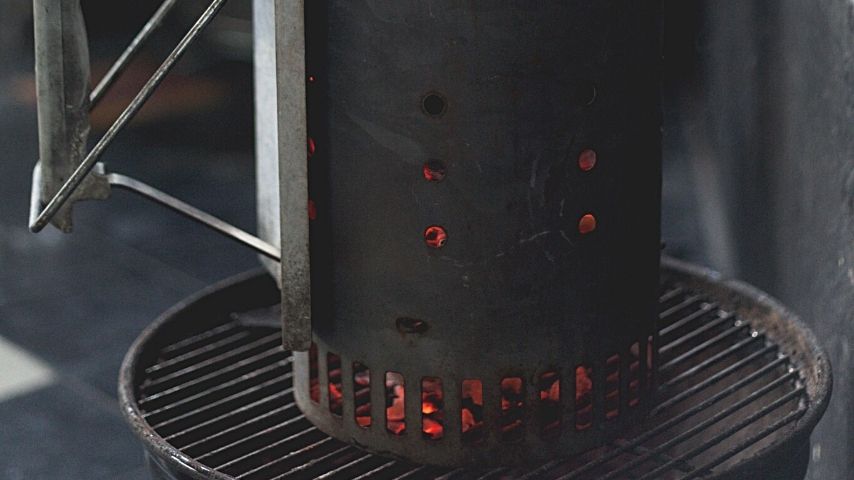
The air will enter the fire pit no matter the direction the wind comes from. Your fire pit will get maximum ventilation resulting in brighter and longer fires.
You can make them high or low depending on the size of your fire pit, and the ashes will accumulate in a single-use.
Disadvantages of Drilling Holes in your Fire Pit
Although air vents have many advantages, they also come with a few disadvantages that you should be aware of and know how to tackle when the issue arises.
1. Rust
Rusting is something you should know before drilling holes in your fire pit.
When you drill the spot in your fire pit, you expose the unpolished surface of the metal to the air, which may lower the life span of your fire pit and cause it to rust.
2. Escape Route of Debris
By drilling holes in your fire pit, you give the debris inside your fire pit an escape route.
Having a hole in the bottom of your pit can cause ashes to escape from the hole and fall below it.
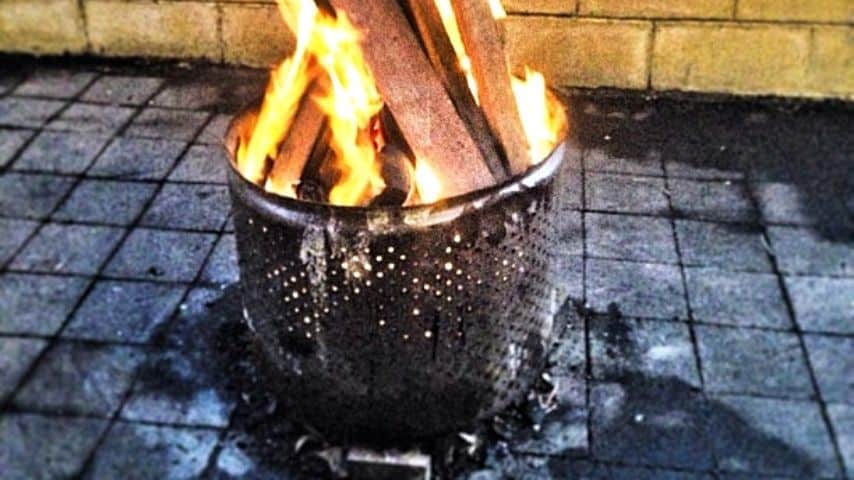
You can tackle this issue by placing a small can after using the fire pit. The ashes, coal, and other debris fall and empty later into a waste bin.
3. Hazardous Sparks
Another thing to beware of is hazardous sparks. The air vents can lead to escaping fire sparks from the fire pit.
Based on where you are camping, it can start a fire if you are not careful enough.
To solve the issue, place the fire pit on the dry ground. If the sparks do escape, there aren’t any plants or trees nearby that can catch fire.
Although, you would need to be more careful when camping in the forest.
Frequently Asked Questions about Drilling Holes in Your Fire Pit
Will drilling air vents in my fire pit help with the smoke?
Having no airflow inside the fire pit can cause more smoke to rise from the fire. If you have a barbecue or camping outdoors, the smoke will ruin an otherwise great experience. Having holes in your firepit will help you resolve this issue.
Is drilling holes in my fire pit for drainage possible?
If your fire pit is fixed outdoors without any shelter to protect it from rain, you can drill fire holes in it. It will accumulate rainwater that will soon cause it to rust if not taken out on time. You can drill a hole in the bottom of your fire pit for rainwater drainage.
Can I place sand in my fire pit?
You can add sand to the fire pit’s bottom to allow your fires to burn for longer. It will make sure that the heat is evenly distributed in the entirety of your fire pit so that your fires are always intense. Move the air vent a little higher if you’re putting sand in a brick fire pit.
